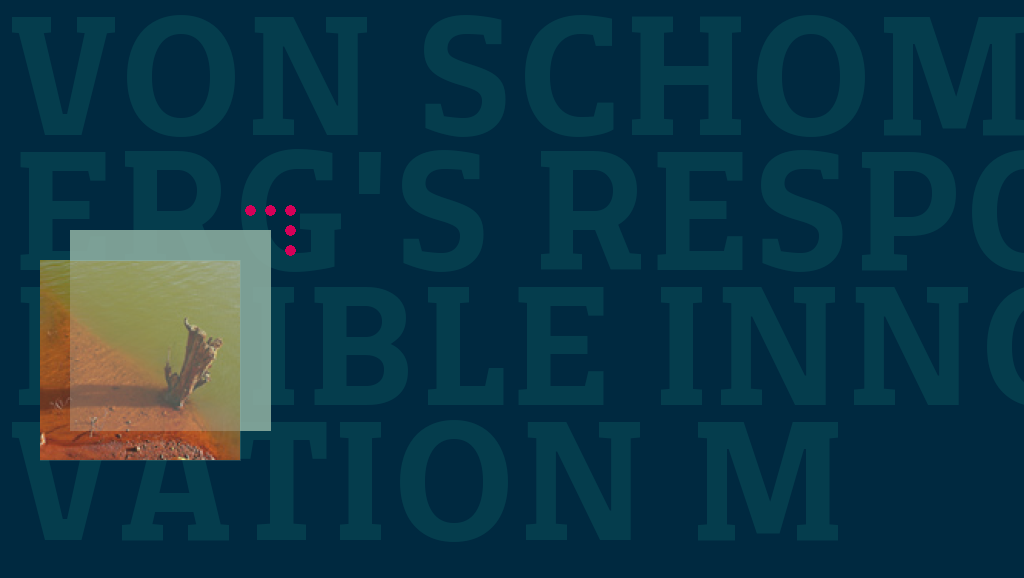René Von Schomberg is the Directorate General for Research at the European Commission. As such he has a great interest in responsible research and innovation and has recently published an article and a ‘Responsible Research and Innovation matrix’ on his blog.
The matrix should be read and interpreted via the article, and here we would like to offer a summary of the main points and issues raised. The piece will be published next year as “A Vision of Responsible Innovation’ in a book entitled Responsible Innovation edited by R. Owen, M. Heintz and J. Bessant and published by John Wiley in London.
The article opens with a historical example of how the definition of responsibility has developed and changed in relation to discovery and innovation. The author argues that ancient inventions were ‘controlled by a central agent to avoid abuse’ but that today ‘Economic exploitation of innovations implies a loss of a sole control agent’.
He goes on to open a debate into how to define and promote innovation that would have a desirable social outcome in terms of benefits and risks, before describing current EU legislation. He states that there are many difficulties in formally measuring the possible benefits and risks for society, arguing that the process is in some way flawed and ‘artificial’. He uses the example of video gaming technology being used in surgery techniques to express the difficulties involved as unforeseen uses emerge for new technology.
He moves on to discussing problems in defining the right impacts and outcomes of research, the subjective nature of the so called ‘good life’ before outlining how EU public policy statements aim to promote responsible innovation offering what he describes as ‘normative anchoring points’.
He then addresses the “grand Challenges” and direction of innovation.
In this section the author explains how the Lund Declaration offers an alternative description of the role of innovation in Europe, implicitly criticizing the prevailing view that innovation is good per se and a viable mechanism through which jobs and well-being will be created. The following quote summarizes Von Schomberg’s general theme; ‘The idea is clear; to steer the innovation process towards societally-beneficial objectives’. The goal is to fund research that will have particular positive outcomes for society as a whole.
The next section in the report is entitled ‘Responsible Research and Innovation: Organizing collective responsibility’. Here the author describes how unforeseen and undesirable effects are not the responsibility of an individual, but are side effects of collective action. He goes on to give some examples of ‘irresponsible innovation’, categorizing four types: a) technology push, b) neglect of fundamental ethical principles,c) policy pull, and d) lack of precautionary measures and technology foresight.
His example of technology push is Monsanto’s attempt to break into the European market with genetically modified soya in the 1990’s. The Dutch government’s electronic patient record system (EPRS) project is his example of the neglect of fundamental ethical principles. The introduction of security technologies, such as the use of biometrics for passports, asylum applications and whole body image technology (“body scanners”) at airports is given as an example of policy pull and he cites the report “Late lessons from early warning” (EEA, 2002) for a string of examples of Lack of precautionary measures and technology foresight.
Under the title ‘A framework for Responsible Research and Innovation’ the author offers his definition of responsible innovation as ‘Responsible Research and Innovation is a transparent, interactive process by which societal actors and innovators become mutually responsive to each other with a view to the (ethical) acceptability, sustainability and societal desirability of the innovation process and its marketable products (in order to allow a proper embedding of scientific and technological advances in our society)’.
Von Schomberg goes on to offer normative anchor points for both the product and the process dimensions, stating that they should be ethically acceptable, sustainable and socially desirable, before introducing and explaining his matrix of ‘examples of lead questions to be answered by stakeholders, either from a product or process perspective in order to fully implement an RRI scheme’. The five headings used are Use of Technology Assessment and Technology Foresight, Application of Precautionary Principle, Innovation Governance, Ethics as a “Design” factor of Technology and Increasing Social-ethical Reflexivity in Research Practices and Deliberative Mechanisms for Allowing Feedback with Policymakers: devising models for responsible governance and public engagement/public debate.
The paper concludes with a section entitled Outlook, within which the author summarizes the current situation and outlines his ideas about how an agenda for responsible innovation could be nurtured. The final line is particularly worthy of note as it states that ‘RRI should become a research and innovation ”design” strategy which drives innovation and gives some “steer” towards achieving societal desirable goals’.
——————
(photo: Perspective by Yogendra174 from Flickr)
















